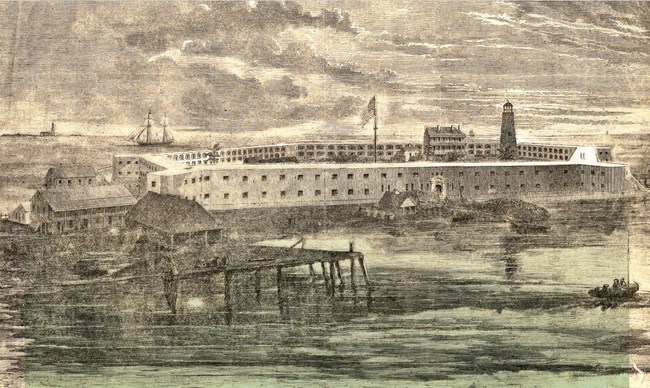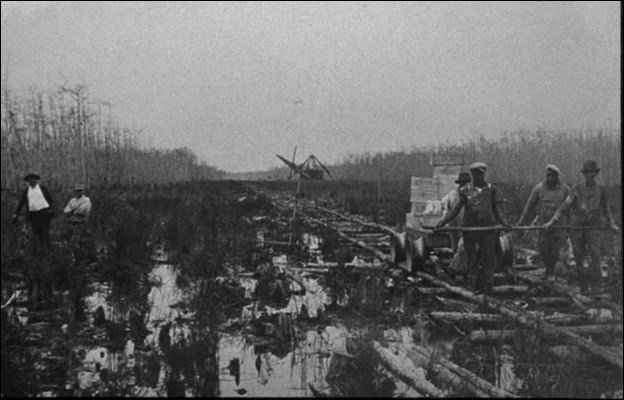In 2018 Congress established the 400 Years of African American Experience Commission to develop and facilitate activities around the four hundredth anniversary of the landing of enslaved African people in colonial Virginia. In the Southeast, the National Park Service is working in calendar year 2020 to host events and activities that highlight the wide range of experiences of Africans and African Americans in the past 500 years. By drawing more attention to these critical stories throughout the region and focusing on expanding our ability to tell broader and more cohesive African American experience stories, we will connect to people and places beyond our national parks.
The history of Africans and African Americans in South Florida is entwined with European exploration and intrusion into the area, beginning in the late 1400s, and with the Native Americans who already lived in the region. The museum collections for the five national park units in South Florida contain archives and artifacts relating to African American history and culture in this region of the United States. These are merely examples from the collections. Visit the South Florida Collections Management Center or contact the staff for more information.
The history of Africans and African Americans in South Florida is entwined with European exploration and intrusion into the area, beginning in the late 1400s, and with the Native Americans who already lived in the region. The museum collections for the five national park units in South Florida contain archives and artifacts relating to African American history and culture in this region of the United States. These are merely examples from the collections. Visit the South Florida Collections Management Center or contact the staff for more information.

Harper’s Monthly Magazine, February 23, 1861, 42: 717, from Monroe County Library, Key West, FL
"The African American Experience" also explores the lives of enlisted men in the 82nd Colored Infantry who were stationed at Fort Jefferson from September 1865 to January 1866. Sections focus on the positive perceptions of black soldiers, regimental crime and punishment, and other traits of life in the 82nd Colored Infantry. The full report is available upon request.
Fort Jefferson in Dry Tortugas National Park is included in the NPS National Underground Railroad Network to Freedom because of the escape of seven enslaved African Americans from the fort in 1847. Having gotten as far as Indian Key northeast of Key West, the men were captured after two days and returned to the fort to resume construction work.
Biscayne National Park: Before Biscayne was established as a national monument, the land on which the Dante Fascell Visitor Center now sits was the site of the segregated Homestead Bayfront Park North, known as "Black Beach" by the public. The National Park Service study “Jim Crow at the Beach: An Oral and Archival History of the Segregated Past at Homestead Bayfront Park” examines the experiences of beachgoers and beach employees before and after desegregation in 1964. The beach opened on November 13, 1955, four years after the whites-only beach opened directly to the south. There were noticeable differences between the services and features available at the two beaches. This is best illustrated by the separate roads used to get to the beaches. The C-103 Mowry canal separated the rough dirt road used by blacks from the paved road for whites. Author Iyshia Lowman uses interviews with both beach users and employees to bring to life the experience of segregation in south Florida.

Big Cypress National Preserve. Soon after the Tamiami Trail was completed in 1928, the logging industry began within the Big Cypress swamp. Many of the people that were involved in the activity were African Americans. Learn more about this experience through oral histories and other research found in the study African Americans and the Sawmills of Big Cypress - A Brief History.
De Soto National Memorial. Beginning with Hernando de Soto's entrada in Florida in 1539, Africans have played a role in local history in the area around the memorial park. His expedition included Africans among the Spanish soldiers, priests, and laborers. In later centuries, escaped African American slaves (maroons) formed a community a few miles up the Manatee River from the memorial. Archeological and historical investigations are underway to learn more about Angola, which is included in the NPS National Underground Railroad Network to Freedom.
Everglades National Park. African American experiences in what is now Everglades National Park are not well documented, though ongoing NPS research studies should shed more light on the subject. Census records reveal African Americans living in the Flamingo area in 1920, and that many of them were born in the Bahamas and Jamaica. The U.S. census also shows African American families and workers living and farming in the Long Pine Key and Royal Palm State Park agricultural areas before and during the Great Depression. And for a brief year or so, the Civilian Conservation Corps established a "colored" camp for African American youth in Flamingo, where they helped eradicate wild cotton to prevent the spread of boll weevil infestations in the South. All of this was before the national park was dedicated in 1947.
Last updated: March 28, 2024
